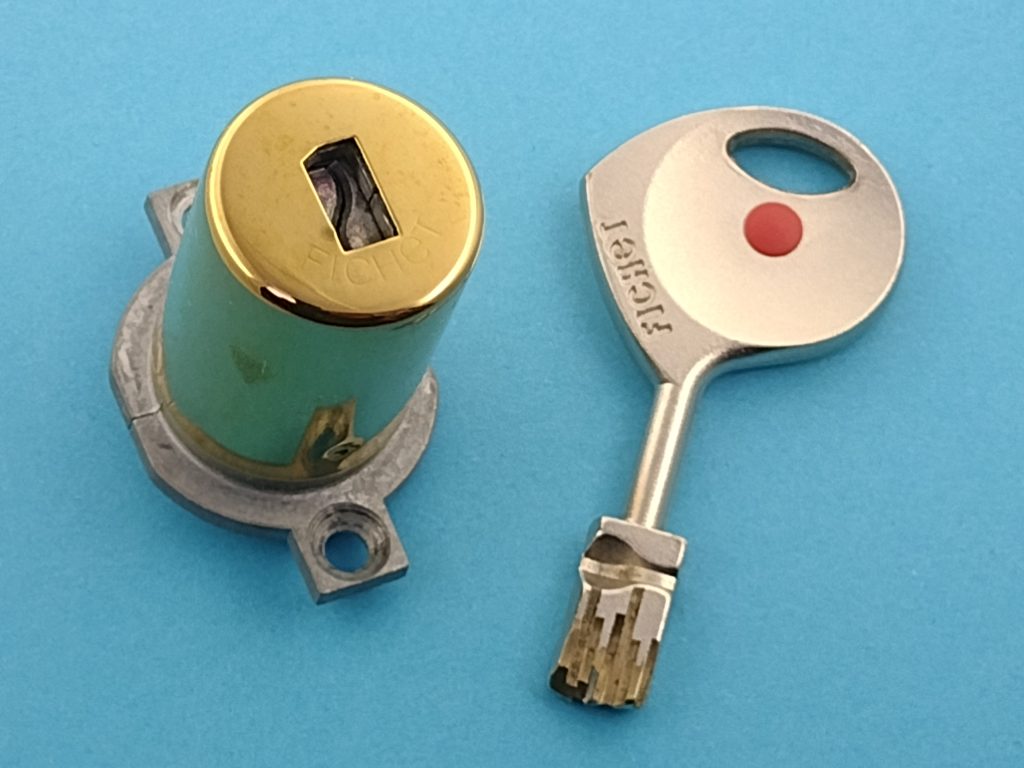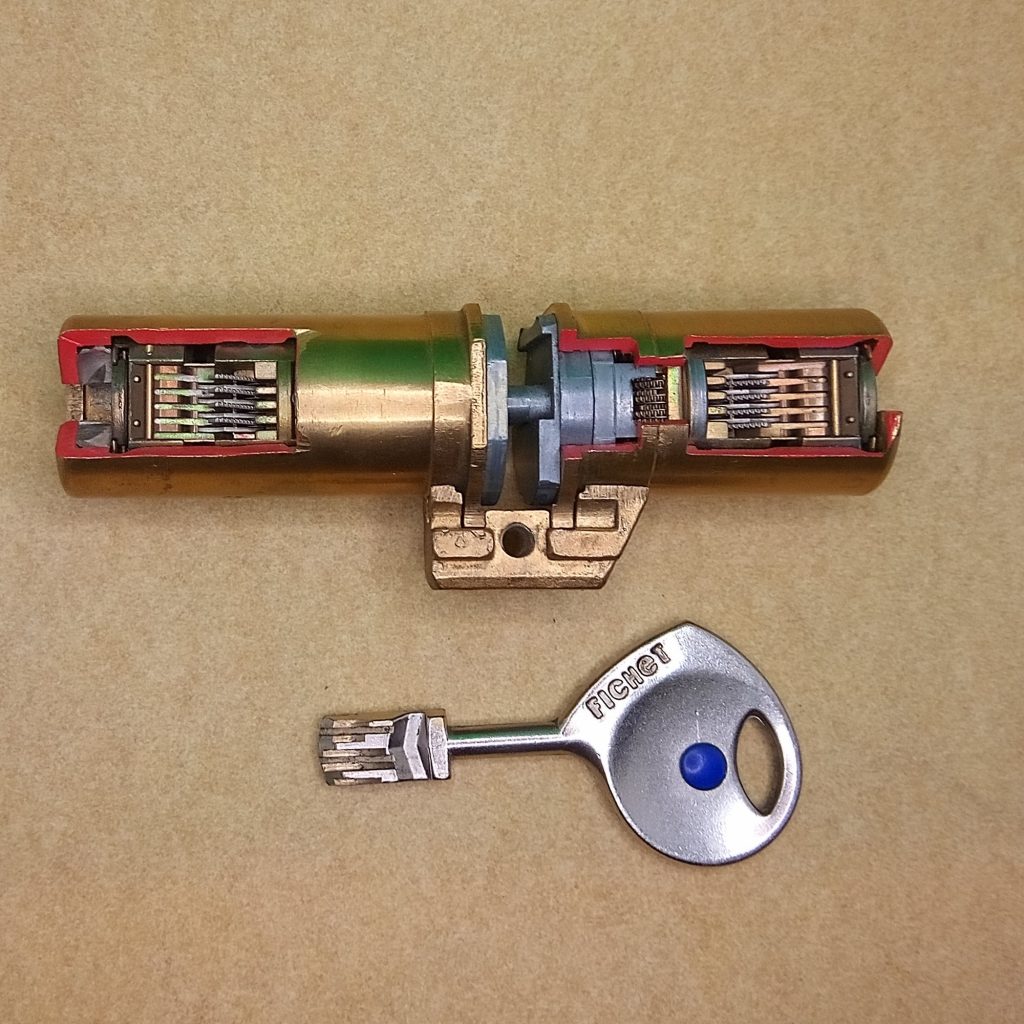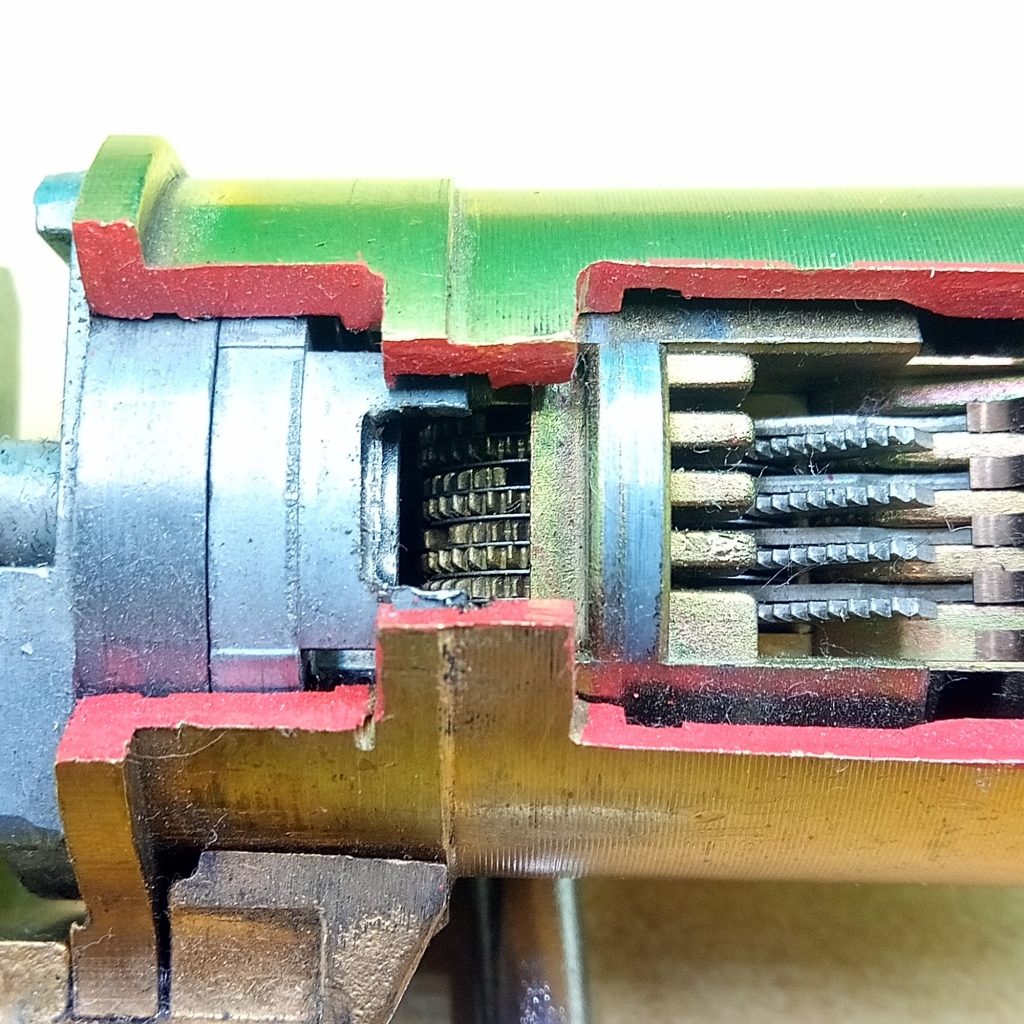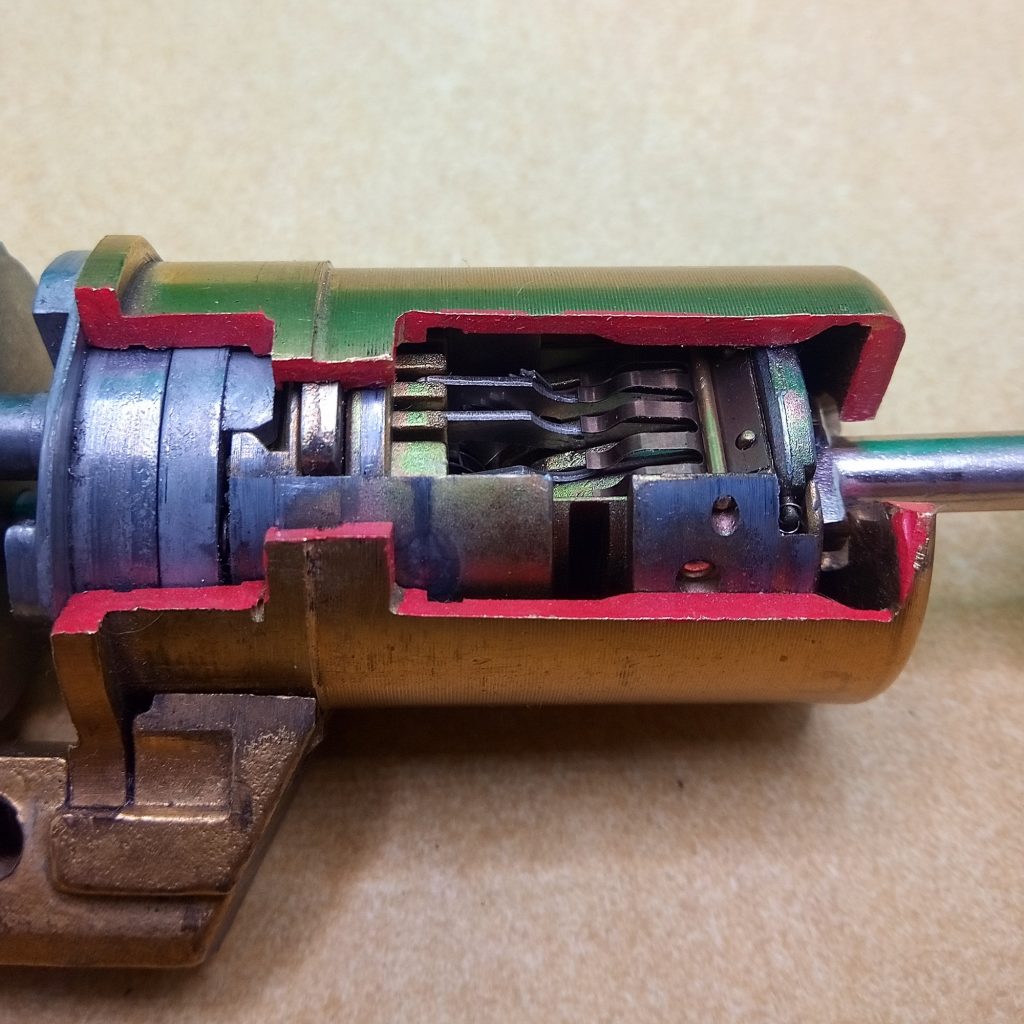In a previous blog post, I’ve written about Qikom’s cutaways. Whereas, this post is a tangent on why we would like to see more cutaways made and the knowledge shared.
When we teach beginners, and show them a unique lock, often they can’t imagine what happens in the lock. As all they can see is the outside. To illustrate this, let’s play a short game with a Fichet 787. The key looks quite interesting, as it has half a dozen cutouts on each side. It’s not symmetrical, and can only be inserted in the keyway in one direction. You feel a spring pushing against the key, but at rotation it seems to be like any other lock.
If you haven’t seen this lock before, take a moment to imagine what the internals are like.

It’s quite obvious where I’m going with this. There can be almost anything inside the shiny cylinder. It will be very difficult to find the solution without taking it a part, or looking at a diagram. The cutaway, like the one from Qikom below, shows the internals from the lock. Reducing the guess work over a picture of the parts.

CC BY-NC-SA 4.0

CC BY-NC-SA 4.0

CC BY-NC-SA 4.0
Is it anything like you imagined it to be?
What does the 787 do? The Fichet 787, is a push lever lock. Where the push action allows the lateral movement of the levers to rotate a set of gears to the opening position. The sidebar is a passive element that checks if the gears are all aligned. With the correct key, the cylinder moves inwards, clears a blocking element, and is able to rotate. At the same time, the key is trapped by two half circle disks.
It is quite possible you have seen this lock before, as it has been around for decades. I’ve learned about the lock in 2018, and recently expanded the knowledge at the Association des Crocheteurs de France lock conference in December 2022. I’ve learned the dovetail, which connects the cam to the core, is a fairly recent addition that prevents a (partially) destructive attack, for example.
French locks are my favorite weird lock designs, where Fichet is king. The ingenuity is admirable, with many clever ways to solve the same problem…
